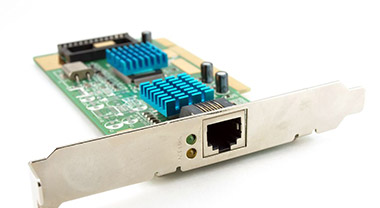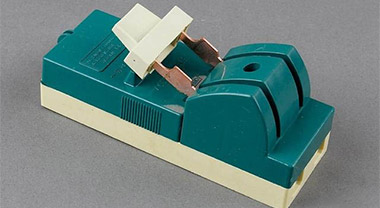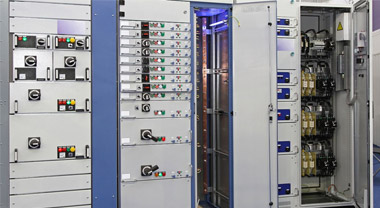Specification requirements and methods for circuit breaker selection
The short-circuit breaking capacity of the circuit breaker ≥ the expected short-circuit current of the line.
Assuming that the capacity of a power supply (SL7 10/0.4kV transformer) is 1600kVA, the secondary current is 2312A, and the short-circuit current at the outlet end 5m is 42.96kA. The rated current of a branch is 125A. Because this branch is very close to the transformer, such as 10m, the circuit breaker of this branch needs to consider HSM1_125H plastic case circuit breaker (its ultimate short-circuit breaking capacity is 400 V, 50kA). However, at 50m away from the transformer, due to the resistance and reactance value of the bus bar, the short-circuit current at 50m has dropped to 34.5kA, and at 100m, it has dropped to 28.8kA. For this, you can choose HSM1_125M molded case circuit breaker (its limit short-circuit breaking capacity is 400V, 35kA).
At present, many domestic circuit breaker manufacturers have the short-circuit breaking capacity of the same frame grade current as E, S, M, H, L or C, L, M, H (CM1 series of Changshu switch factory) or S, H, R, U and other levels. Among them, E is economical type, S is standard type, M is short-circuit breaking type, H is high breaking type, L is current limiting type, C is economical type, L is low breaking type; M is high breaking type, H is Super high breaking type; S is standard type, H is high breaking type, R is current limiting type, U is ultra high breaking type.
Take HSM1_125 molded case circuit breaker as an example, the ultimate short-circuit breaking capacity of E type is 400V, 15kA, S type is 400V, 25kA, M type is 400V, 35kA, and H type is 400V, 50kA.
The ultimate short-circuit breaking capacity (Icu) refers to the short-circuit current that can be turned on and off after a certain test procedure under certain test parameters (voltage, short-circuit current, power factor). After this, it will not continue. The breaking capacity to carry its rated current. Its test program is 0-t (online) C0 ("0" is breaking, t is intermittent time, generally 3min, "C0" means breaking immediately after switching on). After the test, the tripping characteristics and power frequency withstand voltage should be verified.
Operating short-circuit breaking capacity (Ics) refers to the short-circuit current that can be turned on and off after a certain test procedure under certain test parameters (voltage, short-circuit current, and power factor). After this, it must continue. Bearing the breaking capacity of its rated current, its test procedure is 0-t (online) C0-t (online) C0.
Short-time withstand current (Icw) refers to the ability of the circuit breaker to withstand 0.05, 0.1, 0.25, 0.5 or 1s under a certain voltage, short-circuit current, and power factor, while the circuit breaker is not allowed to trip. Icw is the short-time tripping When it is buckled, the evaluation index for the electrical stability and thermal stability of the circuit breaker is for class B circuit breakers. Usually the minimum value of Icw is: when In≤2500A, it is 12In or 5kA, and In>2500A When it is 30kA (DW45_2000 Icw is 400V, 50kA, DW45_3200 Icw is 400V, 65kA).
The test conditions for operating short-circuit breaking capacity are extremely harsh (primary breaking, second breaking). After the test, it will continue to carry the rated current (the number of times is 5% of the life), so it is not only necessary to verify the tripping characteristics, work Frequency withstand voltage, and also verify the temperature rise. According to IEC947_2 (and the 1997 new version of IEC60947_2) and China's national standard GB14048 2, Ics can be 25%, 50%, 75% and 100% of the value of the ultimate short-circuit breaking capacity Icu (50%, 75% and 100% for class B circuit breakers) , No 25% of Category B is because it is mostly used for backbone protection).
An important principle for selecting the circuit breaker mentioned above is that the short-circuit breaking capacity of the circuit breaker is ≥ the expected short-circuit current of the line. The short-circuit breaking capacity of this circuit breaker usually refers to its ultimate short-circuit breaking capacity.
Regardless of Type A or Type B circuit breakers, their operating short-circuit breaking capacity is mostly less than its limit short-circuit breaking capacity Icu.
- Type A: DZ20 series Ics=50%~77%Icu, CM1 series Ics=58%~72%Icu, TM30 series Ics=50%~75%Icu, (individual products Ics=Icu).
- Type B: DW15 series Ics = about 60% Icu, (individually such as 630AIcs = Icu, but the short-circuit breaking capacity is only 30kA at 400V), DW45 series Ics = 62.5% ~ 80% Icu.
Regardless of the type A or type B circuit breaker, as long as its Ics meets the Icu percentage value specified in the IEC947_2 (or GB14048.2) standard, it is a qualified product.
When designing and selecting, users only need to meet the limit short-circuit breaking capacity of the circuit breaker ≥ the expected short-circuit current of the line to meet the requirements. For the line itself, such as the line with a transformer capacity of 1600kVA in the example above, the possible short-circuit current is about 43kA. , It is calculated only by calculating the distance from the transformer to 5m, and the internal resistance of the knife switch, transformer and circuit breaker are all regarded as zero (the short-circuit current is therefore larger than the actual situation). The probability of such a short circuit is extremely small. When selecting a circuit breaker, as long as its ultimate short-circuit breaking capacity> 43kA, for example, 50kA is sufficient. After "0" once and "C0" once, it has completed its mission. A new circuit breaker must be replaced, and the short-circuit breaking capacity of operation, for example, 50% of Icu, also reaches 25kA. It can achieve both primary breaking and secondary breaking. Turning on and off (at 25kA short-circuit current) fault current and then carrying its rated current, the task is very difficult. Some users believe that the design should be based on the operating short-circuit breaking capacity (Ics) of the circuit breaker ≥ the expected short-circuit current of the line. This is actually a misunderstanding and unnecessary.
Some manufacturers’ samples advertise that its product Ics=Icu. If it is true, it means that its I cu indicator has a margin. If it is not true, it means that it has moisture and cannot be trusted, and Ics=Icu. The price is much higher, which is not economical.
It should be mentioned that the short-circuit breaking capacity of all circuit breakers (no matter Icu or Ics) is the effective value of the periodic component. The current of C (close) of "C0" in the short circuit test is the peak current Ich. During the short-circuit breaking test at the test station, the voltage, short-circuit current (effective value) and power factor (cos) have been adjusted, and its on-current is determined.
The current meets the requirements, but the rated short-circuit making and breaking capacity is less than the maximum short-circuit current of the circuit at the installation point of the circuit breaker. The rated current of the circuit breaker must be increased, and the rated current of the overcurrent release should be selected according to the circuit calculation load current. If this does not meet the requirements, the following three solutions can be considered:
(1). The cascade protection (or cascade protection) method is adopted, and the upper-level circuit breaker and the circuit breaker work together to improve the short-circuit breaking capacity. When this scheme is adopted, the instantaneous current of the trip unit of the upper-level circuit breaker needs to be set to about 80% of the rated short-circuit making and breaking capacity of the lower-level circuit breaker.
(2). Use current-limiting circuit breakers.
(3). Adopt circuit breaker and backup fuse.
(4). The single-phase-to-ground short-circuit current at the end of the line is greater than or equal to 1.25 times the instantaneous (or short-delay) tripping current of the circuit breaker. This has a smaller load current, Longer distribution lines are particularly important. Because when the line is longer, the short-circuit current at the end is smaller, and the short-circuit current to ground is even smaller. In the three-phase four-wire system, the short-circuit current to ground is smaller when the phase zero short-circuit occurs, and sometimes it is smaller than the current set by the current release, and the overcurrent release cannot be activated. Lost protection. In this case, consider installing a current transformer on the neutral line (its secondary is connected to a current relay, and when the circuit is short-circuited to the ground, the relay operates to break the circuit breaker), or a line with a zero sequence current transformer (or leakage relay ) To solve. When using these methods, the neutral point of the transformer should be grounded.
(5). The rated voltage of the undervoltage release of the circuit breaker is equal to the rated voltage of the line. Whether under-voltage protection is required or not should be determined according to the requirements of use. Not all circuit breakers need to be equipped with under-voltage releases. In some systems with poor power supply quality, the use of circuit breakers with under-voltage protection may cause undesirable power outages due to voltage fluctuations. If it is necessary to bring an under-voltage release, an appropriate delay should be considered.
(6). For a circuit breaker with short delay, if it is equipped with an undervoltage release, the undervoltage release must be delayed, and its delay time should be greater than or equal to the short-circuit delay time.
(7). The rated voltage of the shunt release of the circuit breaker is equal to the control power voltage.
(8). The rated working voltage of the electric drive mechanism is equal to the control power supply voltage.




